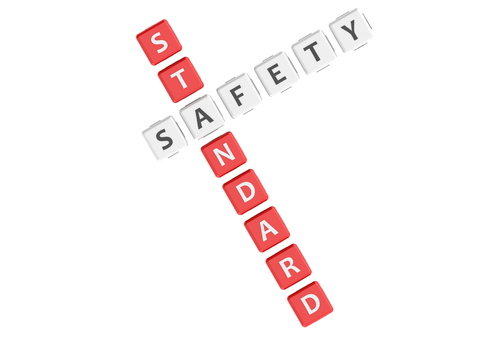
|
The Occupational Safety and Health Administration (OSHA) provides much assistance to businesses of all sizes to help them set up and manage effective safety programs. That assistance includes training programs, which you can learn more about here www.osha.gov/dte/index.html.
In addition, check out this handy infographic that highlights in visual form some facts and figures: www.ishn.com/OSHAInfographic. Bear in mind that while some of those figures are a few years old, the general safety information still applies.
The main way that OSHA helps keep workplaces safe is by setting standards—and by citing employers that violate those standards and thus endanger their employees. To help you plan your organization’s safety training program—and avoid costly citations—check out the top 10 most frequently cited standards for fiscal year 2014 listed below (We have used boldfaced type for the areas that specifically mention training—or lack thereof—as part of the violations).
1. Fall protection in construction (29 CFR 1926.501). Lack of fall protection has been a leading offender for several years. Common mistakes under this standard include failing to provide fall protection to employees working at heights, unprotected sides and edges, failing to use fall protection equipment correctly, and failing to provide protection from falling objects. In many cases, a fall protection program is completely nonexistent. Roofing and framing contractors, as well as single-family residential construction employers, are frequent violators of the fall protection standard.
2. Hazard communication (29 CFR 1910.1200). Common hazard communication mistakes include failing to have a written program, failing to have safety data sheets (SDSs) for each chemical in the workplace, labeling mistakes, lack of employee training, and failing to provide employees with information on the hazards of the chemicals in the workplace.
Your one-stop safety management resource, available 24/7. Go here to take a no-cost site tour or here to try it in your own office!
3. Scaffolding in construction (29 CFR 1926.451). Citations under the construction industry scaffolding standard often stem from scaffolds that are not fully planked, a lack of portable or hook ladders to access scaffold platforms, loading scaffolds in excess of their capacity, and failing to protect employees from fall hazards on scaffolds.
4. Respiratory protection (29 CFR 1910.134). Lack of a written program is the most commonly cited part of the respiratory protection standard. Other common mistakes include not performing a medical evaluation on employees who must wear respirators, failing to select and provide a respirator appropriate for the activity, failing to conduct fit testing, and failing to train employees.
5. Powered industrial trucks (29 CFR 1910.178). Lack of operator training is the most common pitfall under this standard. Other common mistakes include forklifts that are not in safe operating condition and modifications and additions that are not approved by the forklift manufacturer. Industries that frequently violate this standard include warehousing and storage and machine shops.
6. Lockout/tagout (29 CFR 1910.147). Many citations are issues under the lockout/tagout standard for the complete lack of a hazardous energy control program. Other common mistakes include failing to apply locks and tags as necessary and failing to remove unauthorized employees from the area during equipment service and maintenance. Lack of training was not one of the most frequently cited parts of the standard, which could be due to the fact that employers that fail to provide training often lack a lockout/tagout program altogether and thus would be cited for that instead.
7. Ladders in construction (29 CFR 1926.1053). Common ladder hazards include using a ladder not designed for the load it is carrying, using extension ladders that do not provide enough overhang at the top to ensure stability, and using an inappropriate type of ladder for the job.
Great news! BLR’s renowned Safety.BLR.com® website now has even more time-saving features. Take our no-cost site tour! Or better yet, try it at no cost or obligation for a full 2 weeks.
8. Electrical, wiring methods (29 CFR 1910.305). Citations under this standard often occur when flexible cords are used in place of fixed wiring, conductors enter boxes unprotected, employees are exposed to live contacts, and circuit boxes are not designed to prevent moisture from entering.
9. Machine guarding (29 CFR 1910.212). To prevent machine guarding violations, employers should make sure to guard point of operation hazards, ingoing nip points, blades, rotating parts, and any other part of the machinery that may pose a hazard. Make sure that guards remain in place and are not removed by employees.
10. Electrical, general requirements (29 CFR 1910.303). To prevent these citations, employers should ensure that qualified and unqualified workers are appropriately trained for their job tasks to avoid electric shock and electrocution.
Why It Matters
- Several OSHA standards require employee training.
- Several of OSHA’s most frequently cited standards involve violations for lack of training or inadequate training.
- Avoid potentially costly violations by ensuring that you are up to date on all training requirements that apply to your workplace.
